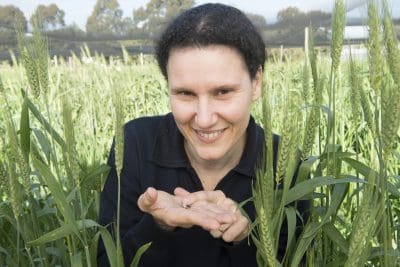CONTROLLING damaging slugs and snails in grain crops is set to improve as a result of a new high-tech research project by Western Australia’s Department of Agriculture and Food (DAFWA).
Slugs and snails cost Western Australian grain growers an estimated $3 million per year in yield losses and control expenses.
The department is investigating the use of digital technology to assist growers to map the presence of snails and slugs in paddocks and improve baiting measures.
Project manager, entomologist Svetlana Micic, said the research aimed to develop new technologies to assist growers to refine control strategies for these pests.
“Snails and slugs have become a significant constraint to grain production in recent years, particularly in higher rainfall areas,” Ms Micic said.
“This research project aims to provide grain growers with an online computer program to provide information on how to map snails or slugs in paddocks, along with various control strategies to minimise their impact on grains production and profitability.”
The work is part of the department’s Boosting Grains Research and Development project’s Flagship initiative, funded by Royalties for Regions.
Ms Micic said the research would overcome the difficulty of identifying the location of snails and slugs.
“Slugs and snails are difficult to detect in paddocks and are usually only noticed once crop damage has occurred,” she said.
“Given that timing is critical to successful baiting, this new decision making aid will provide growers with valuable data to tailor control measures depending on the patchiness of the infestation.”
Researchers will investigate what sort of technology can best be used to detect slugs or the first signs of damage in crops so baits can be applied before significant crop losses occur.
Another key output is to create a program to measure the density and distribution of baits.
“Patchy or uneven bait distribution in applied areas leads to poor kills. The more even the bait spread the more likely it is that snails or slugs will come across the bait and feed,” Ms Micic said.
The effect of lime and lime incorporation on the fertility of snails will also be investigated to find if there is an optimal strategy to suppress snails.
Researchers will also examine if there are any climatic factors that influence the movement of snails up a plant, which could help to determine the optimal time to harvest.
The new research will complement two related research projects undertaken in conjunction with the Grains Research and Development Corporation.
One examines the biology and management of slugs and snails as part of a national approach, while a second project will assess baiting options for conical snails in association with the Stirlings to Coast Grower Group.
For more information about the Flagship projects visit agric.wa.gov.au and search for ‘royalties for regions’.
Source: DAFWA




HAVE YOUR SAY